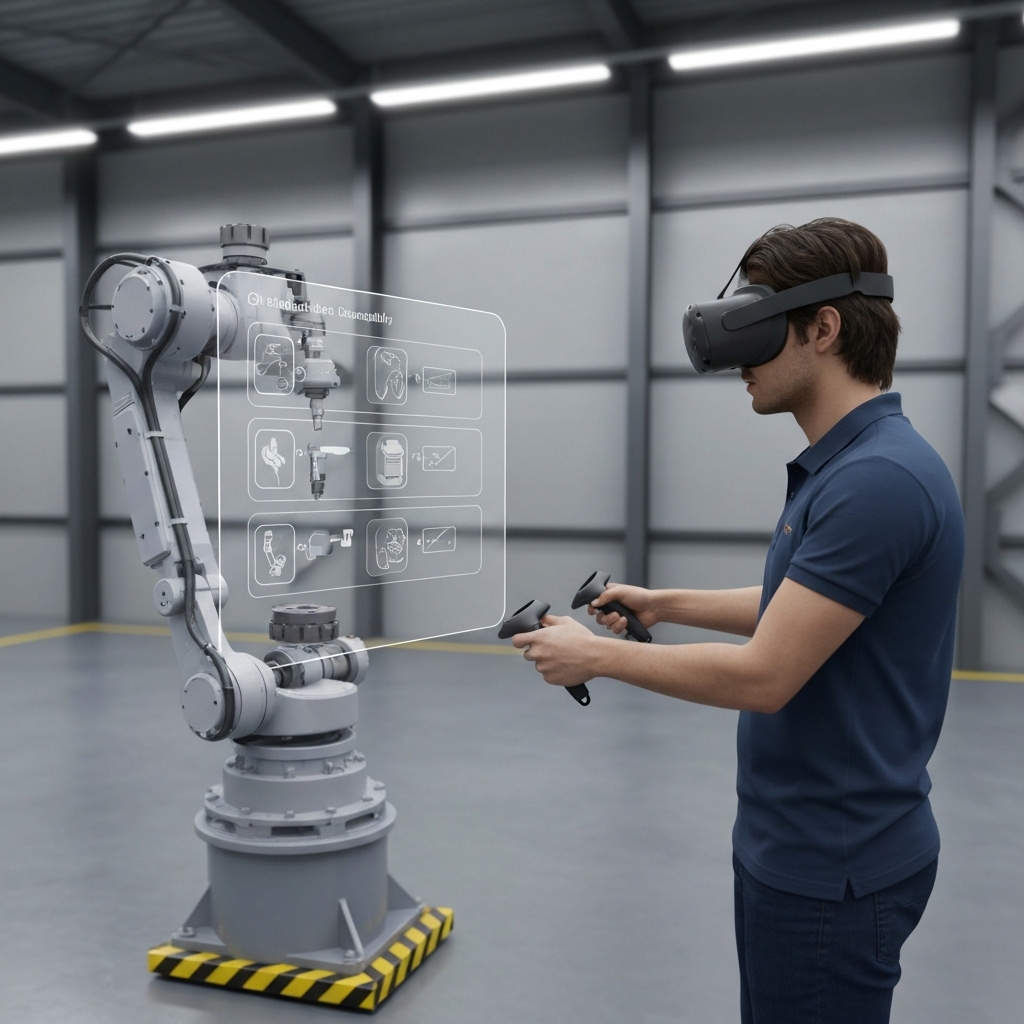The metaverse, once primarily associated with gaming and virtual escapism, is now finding serious applications in the enterprise world. Companies are leveraging immersive environments to bridge geographical gaps, enabling teams to collaborate in real time through lifelike avatars and 3D workspaces. Platforms like Microsoft Mesh integrate with existing productivity tools to create shared virtual spaces where remote employees can interact more naturally than traditional video calls allow.
Industries such as manufacturing, healthcare, and retail are using the metaverse for advanced employee training and simulations. For instance, Walmart has adopted VR-based training modules through its partnership with Spatial, allowing staff to practice customer service scenarios in a risk-free environment. These immersive experiences lead to better retention and faster skill acquisition compared to conventional methods.
Customer engagement is another area where the metaverse is making strides. Brands like Nike and Gucci have launched virtual storefronts within platforms such as Roblox and Decentraland, offering users digital products and interactive brand experiences. This shift not only opens new revenue streams but also allows companies to connect with younger, tech-savvy audiences in meaningful ways.
As infrastructure improves and adoption grows, the metaverse is poised to become a core component of digital transformation strategies. With investments from major tech firms and increasing support from cloud and AI technologies, enterprises are well-positioned to unlock new levels of efficiency and innovation. The future of work—and commerce—may very well be built in virtual worlds that were once meant just for play.
From Virtual Worlds to Virtual Workspaces
As remote and hybrid work models continue to evolve, enterprises are turning to metaverse platforms to bridge the gap between physical and digital workplaces. These virtual environments offer 3D office spaces where employees can interact using avatars, making remote collaboration feel more natural and engaging. By simulating real-world office dynamics—like walking over to a colleague’s desk or gathering in a conference room—companies aim to recreate the spontaneity and social cues often lost in traditional video calls.
Microsoft is at the forefront with its Mesh for Teams platform, which integrates immersive meeting experiences directly into the widely used Teams environment. Features like spatial audio ensure that voices sound as if they’re coming from the direction of the speaker’s avatar, enhancing presence and focus during discussions. This level of immersion helps reduce the fatigue associated with standard video conferencing and supports more effective communication across distributed teams.
Similarly, Meta has been investing heavily in Horizon Workrooms, a VR-based collaboration tool designed to bring teams together in customizable virtual offices. Wearing VR headsets, participants can share screens, whiteboard ideas, and interact with digital content in real time. While adoption is still growing, early adopters report increased engagement and a stronger sense of team cohesion. For more on how businesses are leveraging these tools, check out resources from Microsoft’s official site and Meta’s corporate blog.

Training and Simulation in Immersive Environments
One of the most transformative uses of the metaverse in the corporate world is employee training, where immersive virtual reality (VR) simulations are revolutionizing how skills are developed. By creating realistic, interactive environments, businesses can offer hands-on learning without real-world risks. This is especially valuable in high-stakes fields like healthcare, where surgeons use VR platforms such as Osso VR to rehearse intricate procedures, improving precision and confidence before stepping into an operating room. These simulations replicate real-life variables, allowing professionals to make mistakes and learn from them in a safe, controlled space.
In manufacturing and aviation, companies are leveraging VR to train technicians in equipment maintenance and emergency protocols. For instance, Boeing uses virtual simulations to train aircraft technicians, reducing training time while increasing retention and performance. These virtual labs eliminate the need for costly physical setups and minimize downtime, translating into significant cost savings. According to a study by PwC, VR-trained employees can be up to four times faster in completing tasks compared to their traditionally trained peers, highlighting the efficiency gains possible through immersive learning. You can read more about these findings on PwC’s official website.
Beyond technical skills, the metaverse also supports soft skills training, such as leadership and communication, through simulated interactions with virtual colleagues or clients. This holistic approach ensures employees are well-rounded and prepared for real workplace challenges. As VR hardware becomes more affordable and accessible, even small and mid-sized enterprises are beginning to adopt these tools. Platforms like Microsoft Mesh are making it easier to create collaborative training experiences across global teams, bridging geographical gaps. Learn more about enterprise VR solutions at Microsoft’s business innovation page.

Customer Experience and Virtual Commerce
Brands are increasingly turning to the metaverse to redefine how consumers interact with their products. By creating immersive virtual showrooms, companies like Nike and Gucci are offering customers a chance to explore collections in dynamic 3D environments that mimic real-world shopping—only with more creativity and interactivity. These digital spaces allow users to navigate through virtual stores, examine products from every angle, and even attend exclusive launch events from the comfort of their homes.
One of the most exciting innovations in this space is the integration of digital fashion try-ons using augmented reality (AR) and avatars. Shoppers can now see how a jacket or pair of sneakers looks on their virtual selves before making a purchase decision. This not only enhances user engagement but also reduces return rates by improving customer confidence. Platforms like Spatial and ZEPETO are powering these experiences, enabling brands to reach tech-savvy audiences in playful, memorable ways.
Beyond enhancing the shopping experience, the metaverse opens up entirely new revenue models through digital-only products and non-fungible tokens (NFTs). Limited-edition virtual apparel, accessories, and collectibles can be bought, sold, and worn in virtual worlds, giving rise to a booming digital economy. For instance, Gucci has launched NFTs and digital wearables that appeal to a generation valuing self-expression in online spaces.
As internet connectivity improves and virtual reality devices become more accessible, the line between physical and digital retail will continue to blur. The metaverse isn’t just a trend—it’s becoming a core part of how forward-thinking brands connect with consumers. With continued investment and innovation, virtual shopping experiences could soon become as routine as browsing an e-commerce site.

Challenges and the Road Ahead
The metaverse holds transformative potential for enterprises, offering new ways to collaborate, train employees, and engage customers in immersive digital environments. However, widespread adoption is still in its early stages due to significant challenges. One of the primary concerns is data security—businesses are naturally cautious about exposing sensitive information in virtual spaces where cyber threats may be amplified. Ensuring robust encryption, identity verification, and secure data storage will be essential as companies navigate this new frontier. Organizations like the International Organization for Standardization (ISO) are already working on frameworks to help guide secure implementation across industries.
Interoperability remains another major hurdle. Currently, most metaverse platforms operate in silos, making it difficult for businesses to seamlessly transfer assets, identities, or experiences across different virtual environments. Without common standards, enterprises risk investing in solutions that may become obsolete or incompatible. Industry collaborations such as the Metaverse Standards Forum aim to address this by fostering open, interoperable protocols that enable smoother integration between platforms. These efforts are critical to building a cohesive and scalable business metaverse.
The cost of hardware also presents a barrier to entry, particularly for small and mid-sized businesses. High-performance VR headsets, powerful computing systems, and network infrastructure required for immersive experiences can be prohibitively expensive. However, as with most emerging technologies, prices are expected to decline over time. Companies like Meta and Microsoft are actively developing more affordable and accessible devices tailored for enterprise use, which could accelerate adoption.
Despite these challenges, continued investment from tech giants and startups alike signals strong confidence in the metaverse’s long-term viability. As technology matures and industry standards take shape, many of today’s obstacles are likely to fade. With strategic planning and collaboration, the metaverse could soon become a mainstream component of global business operations—reshaping how we work, communicate, and innovate in the digital age.
Conclusion: The Enterprise Metaverse Is Here to Stay
The metaverse is rapidly evolving from a digital playground into a powerful business ecosystem, where companies are leveraging immersive environments to enhance collaboration, training, and customer engagement. Forward-thinking organizations are setting up virtual offices, hosting product launches in 3D spaces, and using digital twins to simulate real-world operations—boosting efficiency and reducing costs. According to McKinsey & Company, investments in the metaverse could reach $5 trillion by 2030, signaling strong confidence in its long-term impact across industries.
One of the most transformative applications is in remote work, where spatial computing enables teams to interact as avatars in lifelike meeting rooms, fostering a sense of presence that traditional video calls can’t match. Platforms like Microsoft Mesh and Meta’s Horizon Workrooms are already helping enterprises bridge geographical gaps, improving communication and team cohesion. As noted by Forbes, this shift isn’t just about convenience—it’s reshaping corporate culture and redefining productivity in a hybrid world.
Beyond internal operations, the metaverse is opening new frontiers in customer experience and commerce. Brands like Nike and Gucci are launching virtual stores and digital fashion lines, creating novel revenue streams while deepening engagement with younger, tech-savvy audiences. These immersive storefronts allow users to try on products in 3D or attend exclusive virtual events, blending entertainment with e-commerce in ways that feel personal and dynamic.
As infrastructure improves and adoption grows, the integration of AI, blockchain, and extended reality will further accelerate the enterprise metaverse. With major cloud providers like Amazon Web Services and Microsoft Azure offering tools tailored for metaverse development, businesses of all sizes now have access to scalable, secure environments to build and experiment. The future isn’t just virtual—it’s interconnected, intelligent, and increasingly indispensable to modern business strategy.
